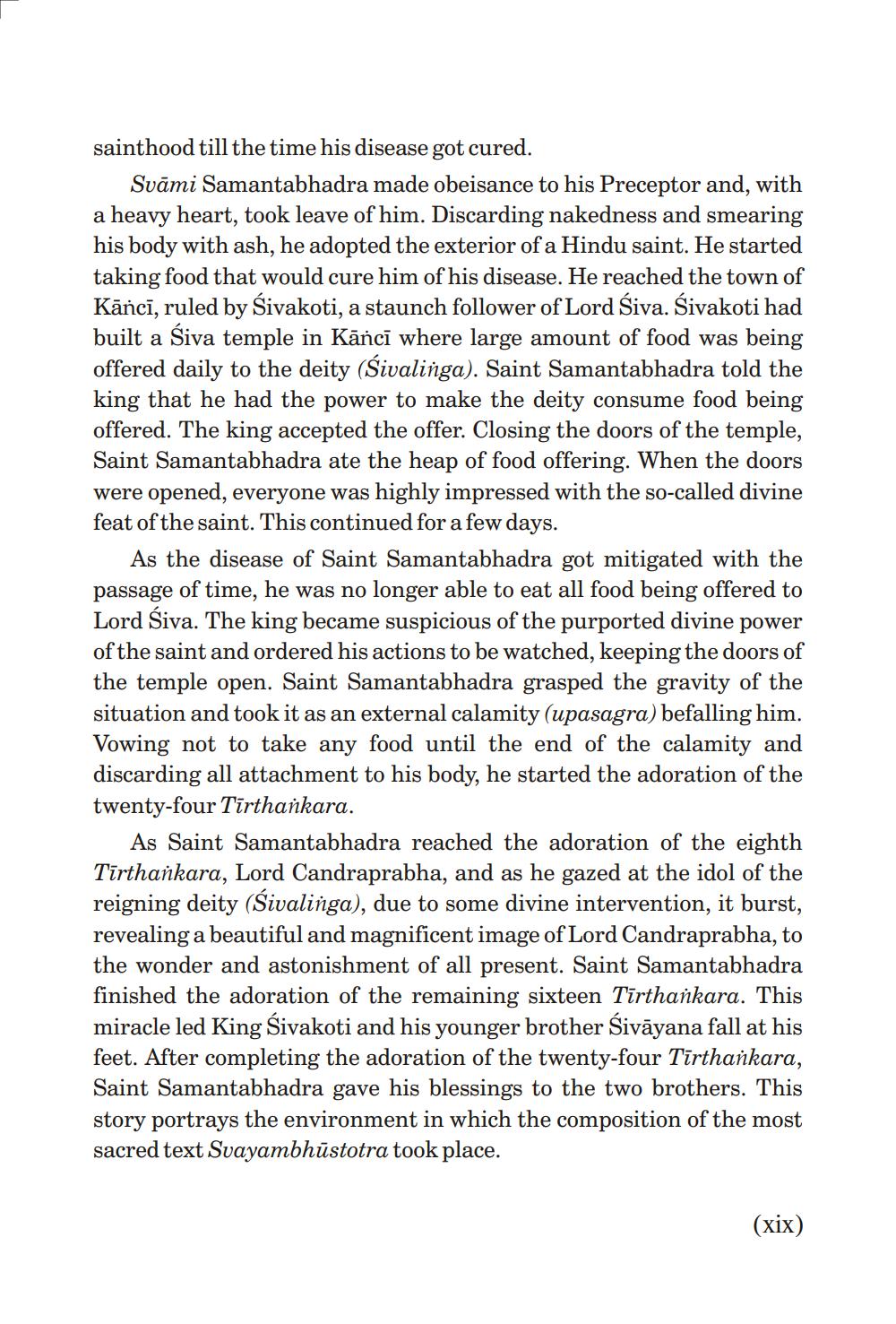________________
sainthood till the time his disease got cured.
Svāmi Samantabhadra made obeisance to his Preceptor and, with a heavy heart, took leave of him. Discarding nakedness and smearing his body with ash, he adopted the exterior of a Hindu saint. He started taking food that would cure him of his disease. He reached the town of Kānci, ruled by Sivakoti, a staunch follower of Lord Siva. Śivakoti had built a Śiva temple in Kāncī where large amount of food was being offered daily to the deity (Śivalinga). Saint Samantabhadra told the king that he had the power to make the deity consume food being offered. The king accepted the offer. Closing the doors of the temple, Saint Samantabhadra ate the heap of food offering. When the doors were opened, everyone was highly impressed with the so-called divine feat of the saint. This continued for a few days.
As the disease of Saint Samantabhadra got mitigated with the passage of time, he was no longer able to eat all food being offered to Lord Siva. The king became suspicious of the purported divine power of the saint and ordered his actions to be watched, keeping the doors of the temple open. Saint Samantabhadra grasped the gravity of the situation and took it as an external calamity (upasagra) befalling him. Vowing not to take any food until the end of the calamity and discarding all attachment to his body, he started the adoration of the twenty-four Tirthankara.
As Saint Samantabhadra reached the adoration of the eighth Tirthankara, Lord Candraprabha, and as he gazed at the idol of the reigning deity (Śivalinga), due to some divine intervention, it burst, revealing a beautiful and magnificent image of Lord Candraprabha, to the wonder and astonishment of all present. Saint Samantabhadra finished the adoration of the remaining sixteen Tirthankara. This miracle led King Śivakoti and his younger brother Śivāyana fall at his feet. After completing the adoration of the twenty-four Tirthankara, Saint Samantabhadra gave his blessings to the two brothers. This story portrays the environment in which the composition of the most sacred text Svayambhustotra took place.
(xix)




